Nuremberg Trials
 From Nwe
From Nwe The Nuremberg Trials were a series of trials most notable for the prosecution of prominent members of the political, military and economic leadership of Nazi Germany. The trials were held in the city of Nuremberg, Germany, from 1945 to 1946, at the Nuremberg Palace of Justice. The first and best known of these trials was the Trial of the Major War Criminals Before the International Military Tribunal (IMT), which tried 24 of the most important captured leaders of Nazi Germany. It was held from November 20, 1945 to October 1, 1946. The Nuremberg Trials were an attempt to bring to justice those leaders of Nazi Germany who were not only responsible for World War II itself, but also the Holocaust, perpetrated against millions of people of Central and Eastern Europe.
There was a second set of trials of lesser war criminals that was conducted under Control Council Law No. 10 at the U.S. Nuremberg Military Tribunals (NMT), including the Doctors' Trial, among others.
Origin
Papers released on January 2, 2006, from the British War Cabinet in London have shown that as early as December 1942, the Cabinet had discussed their policy for the punishment of the leading Nazis if captured. British Prime Minister Winston Churchill had then advocated a policy of summary execution with the use of an Act of Attainder to circumvent legal obstacles, and was only dissuaded from this by pressure from the U.S. later in the war. In late 1943, during the Tripartite Dinner Meeting at the Tehran Conference, the Soviet leader, Josef Stalin, proposed executing 50,000-100,000 German staff officers. Not realizing that Stalin was serious, U.S. President Franklin D. Roosevelt humorously suggested that perhaps 49,000 would do. Churchill denounced the idea of "the cold blooded execution of soldiers who fought for their country." However, he also stated that war criminals must pay for their crimes, and that in accordance with the Moscow Document, which he himself had written, they should be tried at the places where the crimes were committed. Churchill was vigorously opposed to executions "for political purposes."[1]
U.S. Treasury Secretary, Henry Morgenthau Jr., suggested a plan for the total denazification of Germany; this was known as the Morgenthau Plan. The plan advocated the forced deindustralization of Germany, along with forced labor and other draconian measures similar to those that the Nazis themselves had planned for Eastern Europe. Both Churchill and Roosevelt supported this plan, and went as far as attempting its authorization at the Quebec Conference in September 1944. However, the Soviet Union announced its preference for a judicial process. Later, details were leaked to the public, generating widespread protest. Roosevelt, seeing strong public disapproval, abandoned the plan, but did not proceed to adopt support for another position on the matter. The demise of the Morgenthau Plan created the need for an alternative method of dealing with the Nazi leadership. The plan for the "Trial of European War Criminals" was drafted by Secretary of War Henry L. Stimson and the War Department. After Roosevelt died in April 1945, the new president, Harry S. Truman, gave strong approval for a judicial process.
After a series of negotiations between the U.S., Britain, the Soviet Union, and France, details of the trial were worked out. The trials were set to commence on November 20, 1945, in the city of Nuremberg.
Creation of the courts
At the meetings in Tehran (1943), Yalta (1945) and Potsdam (1945), the three major wartime powers, the U.S., USSR, and the United Kingdom, agreed on the format of punishment to those responsible for war-crimes during World War II. France was also awarded a place on the tribunal.
The legal basis for the trial was established by the London Charter, issued on August 8, 1945, which restricted the trial to "punishment of the major war criminals of the European Axis countries". Some 200 German war crimes defendants were tried at Nuremberg, and 1,600 others were tried under the traditional channels of military justice. The legal basis for the jurisdiction of the court was that defined by the Instrument of Surrender of Germany, political authority for Germany had been transferred to the Allied Control Council, which having sovereign power over Germany could choose to punish violations of international law and the laws of war. Because the court was limited to violations of the laws of war, it did not have jurisdiction over crimes that took place before the outbreak of war on September 1, 1939.
The restriction of trial and punishment by the international tribunal to personnel of the Axis countries has led to accusations of victor's justice and that Allied war crimes could not be tried. It is, however, usual that the armed forces of a civilized country [2] issue their forces with detailed guidance on what is and is not permitted under their military code. These are drafted to include any international treaty obligations and the customary laws of war. For example at the trial of Otto Skorzeny his defense was in part based on the Field Manual published by the War Department of the United States Army, on October 1, 1940, and the American Soldiers' Handbook.[3]
If a member of the armed forces breaks their own military code then they can expect to face a court martial. When members of the Allied armed forces broke their military codes, they could be and were tried, as, for example, at the Biscari Massacre trials. The unconditional surrender of the Axis powers was unusual and led directly to the formation of the international tribunals. Usually international wars end conditionally and the treatment of suspected war criminals makes up part of the peace treaty. In most cases those who are not prisoners of war are tried under their own judicial system if they are suspected of committing war crimes – as happened the end of the concurrent Continuation War and led to the war-responsibility trials in Finland. In restricting the international tribunal to trying suspected Axis war crimes, the Allies were acting within normal international law.
Location
The Soviet Union had wanted the trials to take place in Berlin, but Nuremberg was chosen as the site for the trials for specific reasons:
- It was located in the American zone (at this time, Germany was divided into four zones).
- The Palace of Justice was spacious and largely undamaged (one of the few that had remained largely intact through extensive Allied bombing of Germany). A large prison was also part of the complex.
- Because Nuremberg had been appointed "City of the party rallies," there was symbolic value in making it the place of the Nazi party's demise.
It was also agreed that France would become the permanent seat of the IMT and that the first trial (several were planned) would take place in Nuremberg. Because of the Cold War, there were no subsequent trials. Also, these trials were in Nuremberg since it was easily accessible.
Participants
Each of the four countries provided one judge and an alternate, as well as the prosecutors. The judges were:
- Colonel Rt Hon Sir Geoffrey Lawrence (British main and president)
- Sir Norman Birkett (British alternate)
- Francis Biddle (U.S. main)
- John Parker (U.S. alternate)
- Professor Henri Donnedieu de Vabres (French main)
- Robert Falco (French alternate)
- Major-General Iona Nikitchenko (Soviet main)
- Lieutenant-Colonel Alexander Volchkov (Soviet alternate)
The chief prosecutors were Robert H. Jackson for the United States, Sir Hartley Shawcross for the UK, Lieutenant-General R. A. Rudenko for the Soviet Union, and François de Menthon and Auguste Champetier de Ribes for France. Assisting Jackson was the lawyer Telford Taylor and assisting Shawcross were Major Sir David Maxwell-Fyfe and Sir John Wheeler-Bennett. Shawcross also recruited a young barrister Anthony Marreco, who was the son of a friend of his, to help the British team with the heavy workload. Robert Falco was an experienced judge who had tried many in court in France.
The main trial
The International Military Tribunal was opened on October 18, 1945, in the Supreme Court Building in Berlin. The first session was presided over by the Soviet judge, Nikitchenko. The prosecution entered indictments against 24 major war criminals and six criminal organizations—the leadership of the Nazi party, the Schutzstaffel (SS) and Sicherheitsdienst (SD), the Gestapo, the Sturmabteilung (SA) and the High Command of the German army (OKW).
The indictments were for:
- Participation in a common plan or conspiracy for the accomplishment of crime against peace
- Planning, initiating, and waging wars of aggression and other crimes against peace
- War crimes
- Crimes against humanity
The 24 accused were:
"I" indicted "G" indicted and found guilty "º" Not Charged
| Name | Count | Sentence | Notes | |||
|---|---|---|---|---|---|---|
| 1 | 2 | 3 | 4 | |||
|
Martin Bormann |
I | º | G | G | Death | Successor to Hess as Nazi Party Secretary. Sentenced to death in absentia, remains found in 1972. |
|
Karl Dönitz |
I | G | G | º | 10 years | Leader of the Kriegsmarine from 1943, succeeded Raeder. Initiator of the U-boat campaign. Became President of Germany following Hitler's death[1]. In evidence presented at the trial of Karl Dönitz on his orders to the U-boat fleet to breach the London Rules, Admiral Chester Nimitz stated that unrestricted submarine warfare was carried on in the Pacific Ocean by the United States from the first day that nation entered the war. Dönitz was found guilty of breaching the 1936 Second London Naval Treaty, but his sentence was not assessed on the ground of his breaches of the international law of submarine warfare.[4] |
|
Hans Frank |
I | º | G | G | Death | Ruler of the General Government in occupied Poland. Expressed repentance. |
|
Wilhelm Frick |
I | G | G | G | Death | Hitler's Minister of the Interior. Authored the Nuremberg Race Laws. |
|
Hans Fritzsche |
I | I | I | º | Acquitted | Popular radio commentator, and head of the news division of the Nazi Propaganda Ministry. Tried in place of Joseph Goebbels |
|
Walther Funk |
I | G | G | G | Life Imprisonment | Hitler's Minister of Economics. Succeeded Schacht as head of the Reichsbank. Released due to ill health on May 16, 1957 |
|
Hermann Göring |
G | G | G | G | Death | Reichsmarschall, Commander of the Luftwaffe, and several departments of the SS. Committed suicide the night before his execution. |
|
Rudolf Hess |
G | G | I | I | Life Imprisonment | Hitler's deputy, flew to Scotland in 1941 in attempt to broker peace with Great Britain. After trial, committed to Spandau Prison; died 1987. |
|
Alfred Jodl |
G | G | G | G | Death | Wehrmacht Generaloberst, Keitel's subordinate. On February 28, 1953, Jodl was posthumously exonerated by a German de-Nazification court, which found him not guilty of crimes under international law. |
|
Ernst Kaltenbrunner |
I | º | G | G | Death | Highest surviving SS-leader. Chief of RSHA, the central Nazi intelligence organ. Also, commanded many of the Einsatzgruppen and several concentration camps. |
|
Wilhelm Keitel |
G | G | G | G | Death | Head of Oberkommando der Wehrmacht (OKW). |
|
Gustav Krupp von Bohlen und Halbach |
I | I | I | I | ---- | Major Nazi industrialist. Medically unfit for trial. The prosecutors attempted to substitute his son Alfried in the indictment, but the judges rejected this. Alfried was tried in a separate Nuremberg trial, thus escaping the worst notoriety and possibly death. |
|
Robert Ley |
I | I | I | I | ---- | Head of DAF, The German Labour Front. Suicide on October 25, 1945, before the trial began |
|
Konstantin von Neurath |
G | G | G | G | 15 years | Minister of Foreign Affairs until 1938, succeeded by Ribbentrop. Later, Protector of Bohemia and Moravia. Resigned in 1943 due to dispute with Hitler. Released (ill health) November 6, 1954 |
|
Franz von Papen |
I | I | º | º | Acquitted | Chancellor of Germany in 1932 and Vice-Chancellor under Hitler from 1933. Later, ambassador to Turkey. Although acquitted at Nuremberg, von Papen was reclassified as a war criminal in 1947 by a German de-Nazification court, and sentenced to eight years' hard labor. He was acquitted following appeal after serving two years. |
|
Erich Raeder |
G | G | G | º | Life Imprisonment | Leader of the Kriegsmarine until his retirement in 1943, succeeded by Dönitz. Released (ill health) September 26, 1955 |
|
Joachim von Ribbentrop |
G | G | G | G | Death | Nazi Minister of Foreign Affairs |
|
Alfred Rosenberg |
G | G | G | G | Death | Racial theory ideologist. Later, Protector of the Eastern Occupied Territories. |
|
Fritz Sauckel |
I | I | G | G | Death | Plenipotentiary of the Nazi slave labor program. |
|
Hjalmar Schacht |
I | I | º | º | Acquitted | Pre-war president of the Reichsbank. Admitted to violating the Treaty of Versailles. |
|
Baldur von Schirach |
I | º | º | G | 20 years | Head of the Hitlerjugend from 1933 to 1940, Gauleiter of Vienna from 1940. Expressed repentance |
| Arthur Seyss-Inquart | I | G | G | G | Death | Instrumental in the Anschluss. Later, Gauleiter of occupied Holland. Expressed repentance. |
|
Albert Speer |
I | I | G | G | 20 Years | Hitler's favorite architect and personal friend, and Minister of Armaments from 1942. In this capacity, he was ultimately responsible for the use of slave labourers from the occupied territories in armaments production. |
|
Julius Streicher |
I | º | º | G | Death | Incited hatred and murder against the Jews through his weekly newspaper, Der Stürmer. |
"I" indicted "G" indicted and found guilty "º" Not Charged
Throughout the trials, specifically between January and July 1946, the defendants and a number of witnesses were interviewed by American psychiatrist Leon Goldensohn. His notes detailing the demeanor and personality of the defendants survive. The death sentences were carried out October 16, 1946 by hanging using the standard drop method instead of long drop. The French judges suggested the use of a firing squad for the military condemned, as is standard for military courts-martial, but this was opposed by Biddle and the Soviet judges. These argued that the military officers had violated their military ethos and were not worthy of the firing squad, which was considered to be more dignified. The prisoners sentenced to incarceration were transferred to Spandau Prison in 1947.
The definition of what constitutes a war crime is described by the Nuremberg Principles, a document which was created as a result of the trial. The medical experiments conducted by German doctors led to the creation of the Nuremberg Code to control future trials involving human subjects, including the so-called Doctors' Trial.
Of the organizations the following were found not to be criminal:
- Reichsregierung,
- Oberkommando and Generalstab der Wehrmacht
- SA (as most of its crimes were committed before the war started; it was not closely looked at)
- Reiter-SS
Influence on the development of international criminal law
The Nuremberg trials had a great influence on the development of international criminal law. The International Law Commission, acting on the request of the United Nations General Assembly, produced in 1950 the report Principles of International Law Recognized in the Charter of the Nürnberg Tribunal and in the Judgment of the Tribunal (Yearbook of the International Law Commission, 1950, vol. III). The influence of the tribunal can also be seen in the proposals for a permanent international criminal court, and the drafting of international criminal codes, later prepared by the International Law Commission.
Part of the defense was that some treaties were not binding on the Axis powers because they were not signatories. This was addressed in the judgment relating to war crimes and crimes against humanity which contains an expansion of customary law "the Convention Hague 1907 expressly stated that it was an attempt 'to revise the general laws and customs of war,' which it thus recognized to be then existing, but by 1939 these rules laid down in the Convention were recognized by all civilized nations, and were regarded as being declaratory of the laws and customs of war which are referred to in Article 6 (b) of the [London] Charter."[2] The implication under international law is that if enough countries have signed up to a treaty, and that treaty has been in effect for a reasonable period of time, then it can be interpreted as binding on all nations not just those who signed the original treaty. This is a highly controversial aspect of international law, one that is still actively debated in international legal journals.
The Nuremberg trials initiated a movement for the prompt establishment of a permanent international criminal court, eventually leading over fifty years later to the adoption of the Statute of the International Criminal Court.
- The Conclusions of the Nuremberg trials served to help draft:
- The Genocide Convention, 1948.
- The Universal Declaration of Human Rights, 1948.
- The Convention on the Abolition of the Statute of Limitations on War Crimes and Crimes against Humanity, 1968.
- The Geneva Convention on the Laws and Customs of War, 1949; its supplementary protocols, 1977.
Validity of the court
The validity of the court has been questioned by some for a variety of reasons:
- The defendants were not allowed to appeal or affect the selection of judges. Some have argued that, because the judges were appointed by the victors, the Tribunal was not impartial and could not be regarded as a court in the true sense. A. L. Goodhart, Professor at Oxford, opposed this view, writing:
Attractive as this argument may sound in theory, it ignores the fact that it runs counter to the administration of law in every country. If it were true then no spy could be given a legal trial, because his case is always heard by judges representing the enemy country. Yet no one has ever argued that in such cases it was necessary to call on neutral judges. The prisoner has the right to demand that his judges shall be fair, but not that they shall be neutral. As Lord Writ has pointed out, the same principle is applicable to ordinary criminal law because "a burglar cannot complain that he is being tried by a jury of honest citizens" ("The Legality of the Nuremberg Trials," Juridical Review, April, 1946).
- The main Soviet judge, Nikitchenko, had taken part in Stalin's show trials of 1936-1938.
- One of the charges included conspiracy to commit aggression against Poland in 1939. The Secret Protocols of the German-Soviet Non-Aggression Pact of August 23, 1939, proposed the partition of Poland between the Germans and the Soviets; however, Soviet leaders were not tried for being part of the same conspiracy.
- In 1915, the Allied Powers, Britain, France, and Russia, jointly issued a statement explicitly charging, for the first time, another government (the Sublime Porte) of committing "a crime against humanity." The argument could be made it was not until the phrase was further developed in the London Charter that it had a specific meaning. As the London Charter definition of what constituted a crime against humanity was unknown when many of the crimes were committed, it could be argued to be a retrospective law, in violation of the principles of prohibition of ex post facto laws and the general principle of penal law nullum crimen, nulla poena sine praevia lege poenali.
- The trials were conducted under their own rules of evidence; the indictments were created ex post facto and were not based on any nation's law; the tu quoque defense was removed; and some claim the entire spirit of the assembly was "victor's justice". Article 19 of the Nuremberg International Military Tribunal Charter reads as follows:
The Tribunal shall not be bound by technical rules of evidence. It shall adopt and apply to the greatest possible extent expeditious and nontechnical procedure, and shall admit any evidence which it deems to be of probative value.
U.S. Supreme Court Chief Justice Harlan Fiske Stone called the Nuremberg trials a fraud. "[Chief US prosecutor] Jackson is away conducting his high-grade lynching party in Nuremberg," he wrote. "I don't mind what he does to the Nazis, but I hate to see the pretense that he is running a court and proceeding according to common law. This is a little too sanctimonious a fraud to meet my old-fashioned ideas."[5]
Associate Supreme Court Justice William Douglas charged that the Allies were guilty of "substituting power for principle" at Nuremberg. "I thought at the time and still think that the Nuremberg trials were unprincipled," he wrote. "Law was created ex post facto to suit the passion and clamor of the time."
Notes
- ↑ John Crossland, Churchill: Execute Hitler without trial The Sunday Times, January 1, 2006. Retrieved November 27, 2021.
- ↑ 2.0 2.1 Judgment: The Law Relating to War Crimes and Crimes Against Humanity The Avalon Project. Retrieved November 27, 2021.
- ↑ Trial of Otto Skorzeny and Others United States Military Court in Germany. Retrieved November 27, 2021.
- ↑ Judgment: Doenitz The Avalon Project. Retrieved November 27, 2021.
- ↑ Alpheus T. Mason, Harlan Fiske Stone: Pillar of the Law (Archon Books, 1968).
References
ISBN links support NWE through referral fees
- de Villemarest, Pierre. Untouchable: Who protected Bormann & Gestapo Müller After 1945. Aquilion, 2005. ISBN 1904997023
- Gilbert, G.M., Nuremberg Diary. Da Capo Press, 1995. ISBN 0306806614
- Harris, Whitney. Tyranny on Trial: The Evidence at Nuremberg. 1954.
- Mason, Alpheus T. Harlan Fiske Stone: Pillar of the Law. Archon Books, 1968.
- Persico, Joseph E. Nuremberg: Infamy on Trial. Penguin Books, 1994. ISBN 014016622X
External links
All links retrieved November 16, 2022.
- Nuremberg Trials Project: A digital document collection Harvard Law School Library
- Judgment of the International Military Tribunal
- Nuremberg Trial Proceedings Vol. 1: Charter of the International Military Tribunal
- United States Holocaust Memorial Museum Online Exhibit
- Photos: The Nuremberg Trials
- Nuremberg Trials
- World War Two: Nuremberg Trials
- World War Two: Nuremberg defendants
- The Nuremberg Judgments Chapter 6 from The High Cost of Vengeance by Freda Utley (1949 Henry Regnery Company) Made available by "The Freda Utley Foundation"
Credits
New World Encyclopedia writers and editors rewrote and completed the Wikipedia article in accordance with New World Encyclopedia standards. This article abides by terms of the Creative Commons CC-by-sa 3.0 License (CC-by-sa), which may be used and disseminated with proper attribution. Credit is due under the terms of this license that can reference both the New World Encyclopedia contributors and the selfless volunteer contributors of the Wikimedia Foundation. To cite this article click here for a list of acceptable citing formats.The history of earlier contributions by wikipedians is accessible to researchers here:
The history of this article since it was imported to New World Encyclopedia:
Note: Some restrictions may apply to use of individual images which are separately licensed.
↧ Download as ZWI file | Last modified: 02/04/2023 08:07:54 | 44 views
☰ Source: https://www.newworldencyclopedia.org/entry/Nuremburg_Trials | License: CC BY-SA 3.0
 ZWI signed:
ZWI signed:

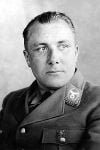
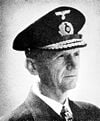
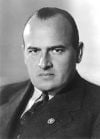








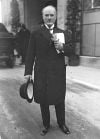

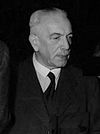
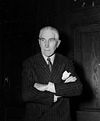







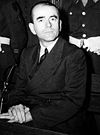

 KSF
KSF